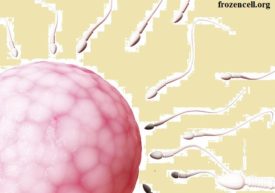Intrauterine Insemination (IUI) is placing the prepared sperm directly into uterine cavity , which directly increase success rate of pregnancy. Indication of Intrauterine Insemination has increased manifold with increase in the incidence of infertility. Therefore to know about the risk factor/ side effect of IUI (Intrauterine Insemination) is equally being important .
Intrauterine Insemination is an old and primary treatment to manage infertility. The basic aim of Intrauterine Insemination is to increase the number of active & efficient sperm to reach the Fallopian tube. Subsequently increase the chance of fertilization. Initially Intrauterine Insemination was used to treat male infertility e.g. – azoospermia, oligozoospermia, asthenozoospermia or asthenoteratozoospermia. But now Intrauterine Insemination is also preferred indication for other indication like un-explained infertility , cervical factors etc.
Intrauterine Insemination (IUI) is of two type. When Intrauterine Insemination is performed with male partner / husband sperm, it is called IUI-H. When Intrauterine Insemination is performed with third party donor sperm, it is called IUI-D.
The objective of this discussion is to highlight the risk factor and side effect of Intrauterine Insemination as well as measures to make IUI safe.
Risk factor of Intrauterine Insemination
- Risk of infection
This is true that risk of infection following IUI is rare. But this is the time to think about hazard of infection following IUI. There are many factors which increase the probability of infection following IUI.
- Increasing number of IUI due to increasing rate of infertility.
- Transmission of infection with sperm.
- Transmission of infection from human serum albumin used for sperm preservation & sperm processing.
- Additional risk of unidentified & emerging viruses.
Infertility of all type are increasing worldwide. IUI is a basic & primary treatment to treat infertility. Therefore its use is increasing rapidly. IUI can be performed even with minimum infrastructure and minimal training. Therefore IUI is first line as well as applicable treatment in remote and underdeveloped area. Where proper method of investigation may not be available.
Transmission of infection form sperm has been discussed a lot. Most of medical professional and persons related to Intrauterine Insemination are aware about diseases transmitted by sperm. It is also relatively easy to diagnose the disease transmitted by sperm. Moreover the male partner/ husband or third party sperm donor remain in contact with clinician or sperm bank. Therefore they can be tracked or re-investigated even later on or whenever required. Also all sperm banks are releasing preserved sperm after proper quarantine. Which eliminate the chance of disease transmission by sperm.
Transmission of infection from human serum albumin used for sperm preservation is next possibility. Clinician or sperm bank don’t have any access to albumin donor. Even it is difficult to re-investigate the albumin donors because it is being pulled from a vast number people and mixed. Storage & transportation of human serum albumin is another issue, which can be compromised anytime because of poor infrastructure in developing or underdeveloped country.
Human serum albumin is processed and treated to make it safe. But no one can deny about human or mechanical failure. There are reports that batches of human serum albumin has been taken back from the market. But no correct data has been published regarding person infected by the use of those Human serum albumin or its product.
Unidentified & emerging viruses is a major future threat due to use of any human or animal product. Human serum albumin is a known source of disease transmission, presently which is an integral part of all culture media used to prepare or preserve the sperm. Zoonotic disorder are also coming in same grade. The most favorable and probable route for transmission of Unidentified & emerging viruses is human fluid or human organ transplant. Human serum albumin is one of them. World need to understand the threat of unidentified & emerging viruses. It can endanger a big majority of people even before its recognition or finding out preventive measure or treatment.
2. Risk of Multiple.
The risk of getting pregnant with twin or more children after Intrauterine Insemination is not very common but not rare also. Getting pregnant with multiple is a known side effect of fertility medicine taken during Intrauterine Insemination procedure. Multiple have certain risk like :
Miscarriage Premature delivery Low birth weight
Gestational diabetes Pre-eclampsia etc.
Side effect of Intrauterine Infection
- Fertility medicine taken during IUI.

